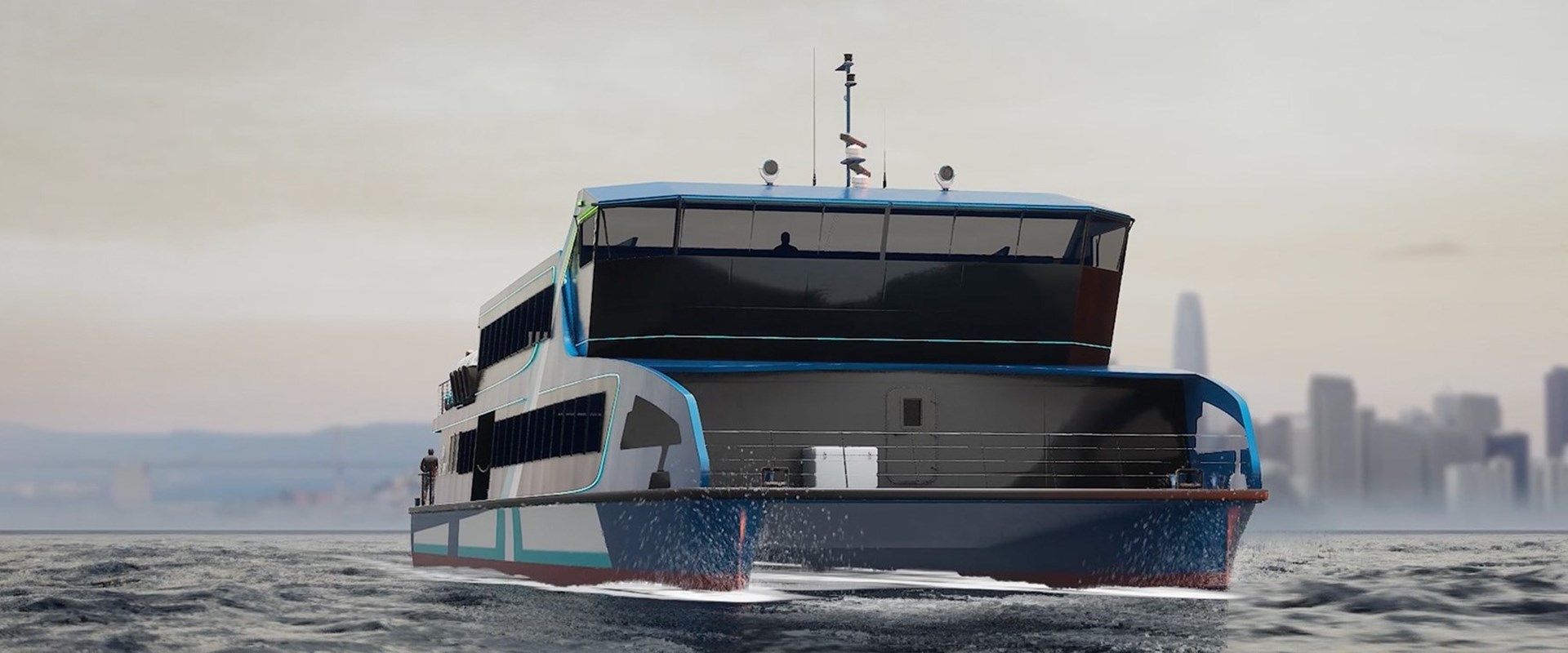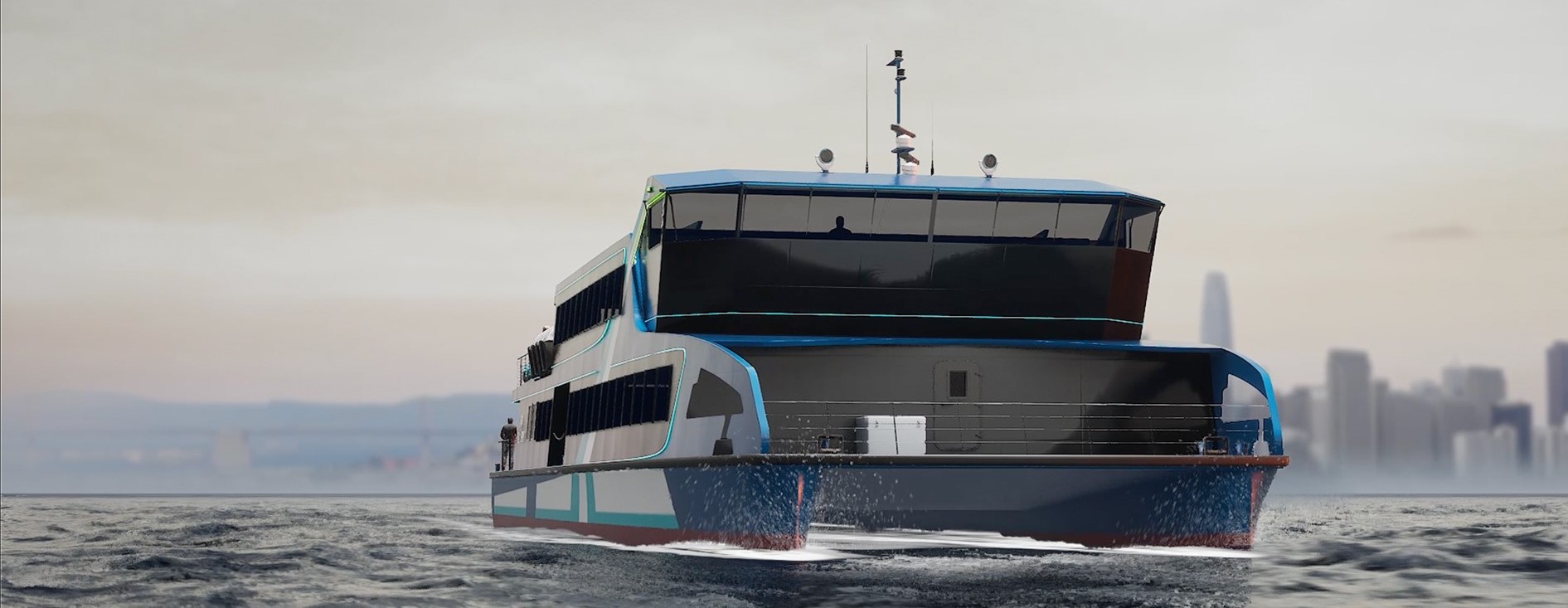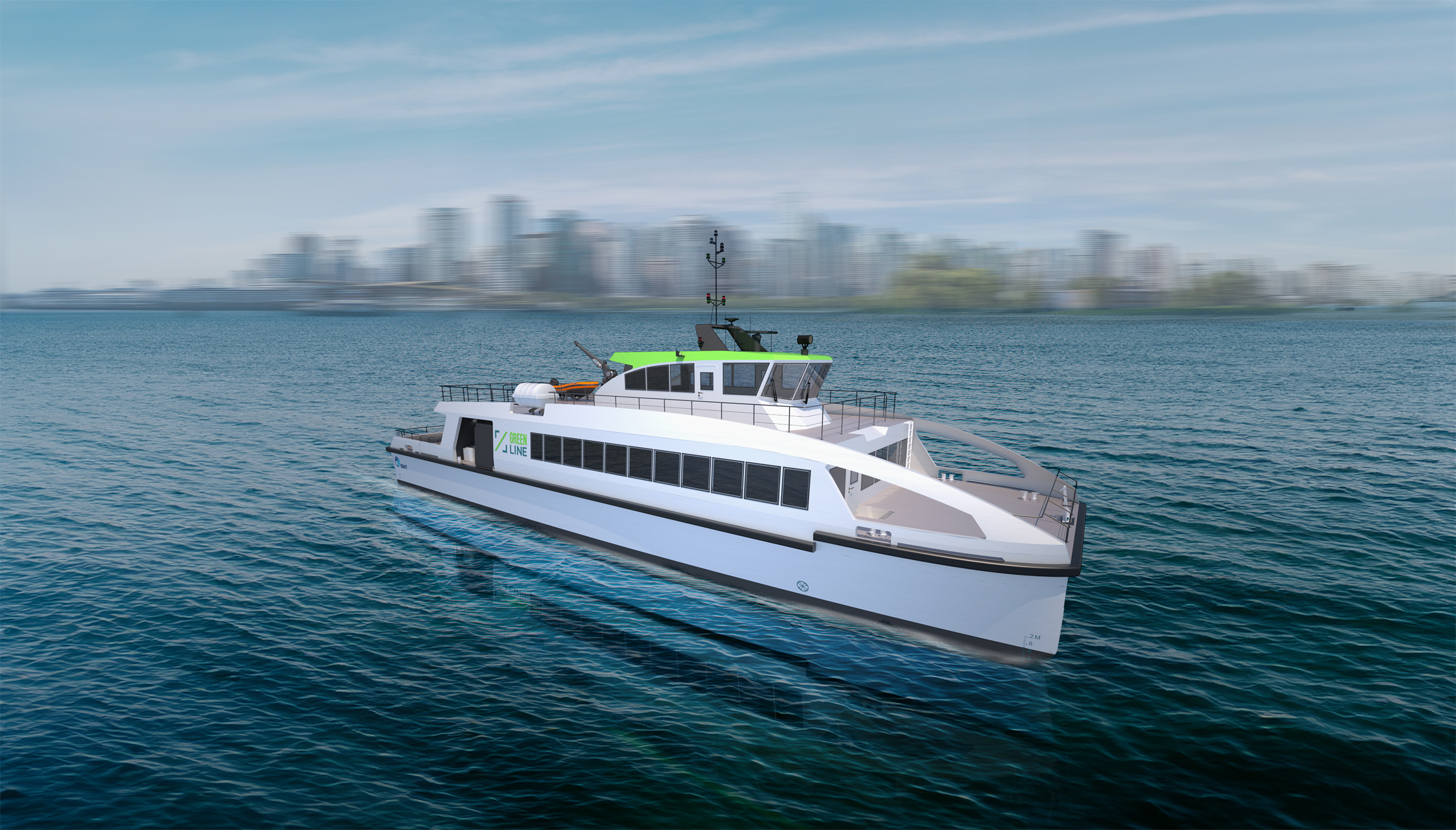
4 November 2024
For almost four decades, BMT has led the way in ferry design, establishing itself as an industry leader by consistently embracing new technologies and collaborating closely with all in the industry to meet the latest needs. A key milestone in our journey was the launch of the hybrid MPA Guardian vessel in 2022, which marked the start of an exciting chapter in hybrid and electric vessel design. In 2023 we delivered hybrid Crew Transfer Vessel (CTV) designs for the wind sector and introduced our 500-passenger, all-electric ferry concept at the International Workboat Show, setting new standards in sustainable transportation. This year, we are thrilled to unveil our latest advancement: a 32-meter all-electric ferry developed in partnership with Greenline Marine.
With extensive experience of vessel design and retrofit with a commitment to innovation, BMT is uniquely positioned to guide operators in identifying and implementing the most effective solutions for a wide range of applications in the transition to net-zero marine operations.
Understanding the complexity of sustainable fuel solutions
Navigating the path to sustainable marine fuel solutions is inherently complex, requiring careful consideration of technological, regulatory, and operational factors. The maritime industry recognises that there’s no single solution to sustainable fuel but rather it will be a blend across the industry of alternative fuels, battery-electric and emerging novel technologies to meet the diverse individual needs.
In such a rapidly changing landscape battery-electric vessels stand out as strong contenders, especially where vessels run to well-defined schedules and predictable routes such as ferries. Like all emerging technologies, electric ferry designs come with unique challenges which BMT is well-equipped to tackle.
The importance of comprehensive route and service analysis
Battery electric ferries require a much deeper understanding of the intended route and service requirements to ensure that the proposed battery solution can endure the electrical loads required for each journey. BMT leverages decades of experience in ferry operations to understand the holistic view when it comes to route powering, manoeuvring but also the often-overlooked hotel loads for the onboard systems such as air conditioning, lighting and passenger amenities. At BMT we also factor in all the new challenges such as the vessel’s operating location, season, and environmental variables ensuring that operators receive a vessel precisely suited to meet customer demands and perform efficiently in real-world conditions.
Collaborative electric ferry design process
The future of alternatively fuelled and powered vessels will increasingly depend on the maturity of shore-side infrastructure. In the case of electric ferries, we’re accustomed to the efficient embarkation and disembarkation of passengers, but now the industry faces a new challenge: how to routinely ‘embark’ electrons into the batteries. This requires a detailed understanding of shore-side infrastructure and greater consideration of its role from the very start of the design lifecycle.
With collaboration at the core of the maritime industry, BMT is positioned as a vital conduit integrating all these infrastructure and operational considerations within the design process. By bringing together all stakeholders and their specialised insights at an early stage, BMT enables vessel-wide optimisation. From streamlining shore-side recharging to fine-tuning propulsion systems and hull forms, our holistic approach maximises the efficiency of the entire system. This balanced design process uncovers small, often overlooked efficiencies that combined can lead to significant energy savings and performance gains across the vessel’s design and operation.
Advantages beyond emissions reduction
The choice of moving to an electric ferry extends beyond the commonly highlighted environmental benefits compared to traditionally powered vessels.
BMT’s expertise in ferry design
BMT’s extensive capability in ferry design encompasses a varied range of vessels, from 9 metres to 85 metres developed through decades of iteration and innovation. Celebrated for its excellence in the ferry design market, BMT is increasingly prioritising sustainable solutions and investing our efforts into this area. Electrification represents one crucial aspect of our broader commitment to a sustainable future.
As the focus on the benefits of electric ferries grows, BMT continues to support operators in navigating the complex challenges associated with emission reduction and offering insight into harnessing its many advantages. Through a collaborative design process and an emphasis on early-stage optimisation, BMT looks to support all operators pave their way to a more sustainable maritime industry.

Alex Blake - Senior Naval Architect

42m Electric Ferry Concept Design

Greenline Marine 32m Electric Ferry

N/A
At 3am on a March morning, while many were still sleeping, our amazing colleagues in the Netherlands laced up their trainers and took on a 15km sunrise walk to raise money and awareness for ALS. This year’s walk carried even deeper meaning, as it was inspired by one of our own teammates recently diagnosed with the condition.

Brad Saunders
The M4 (Moored MultiModal Multibody) Wave Energy Converter (WEC) has successfully been deployed into King George Sound in Albany WA.

N/A
Our team of experts had a remarkable presence at the International Conference on Ocean Energy (ICOE) 2024 held in Melbourne.

N/A
World Maritime Day is a moment to recognise the importance of the maritime industry in global trade, sustainability, and safety. We are proud to be at the forefront of innovation, working to shape a safer and more sustainable future for maritime operations.